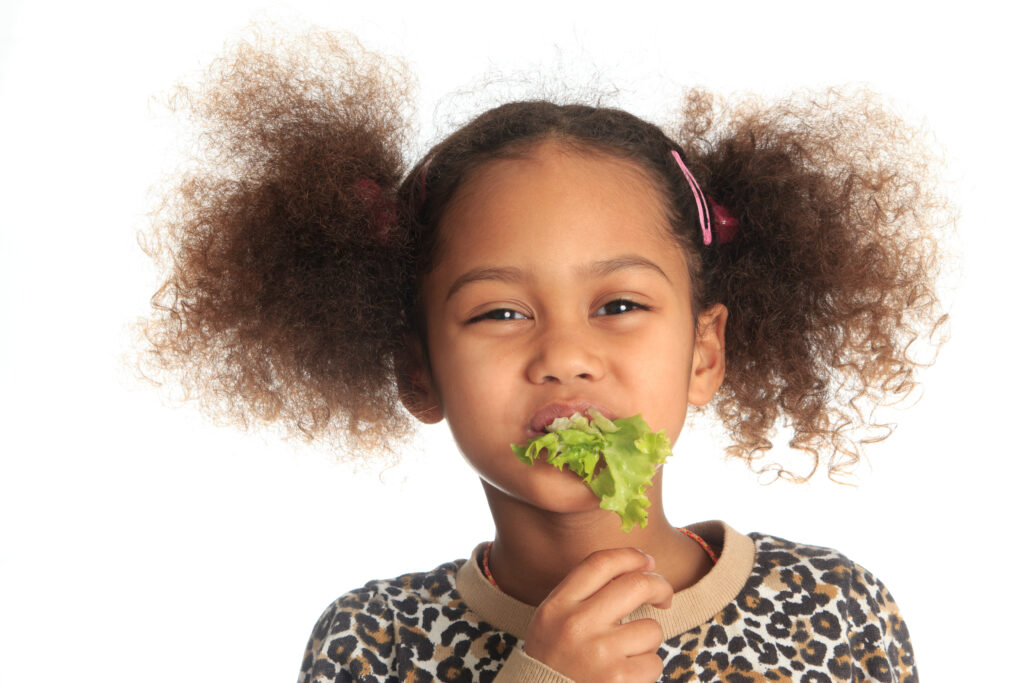
When I teach nutrition education in schools, I always start by asking the students what foods they consider healthy. Children as young as infants can quickly rattle off a list of fruits and vegetables such as banana, apples, broccoli, carrots and cucumber. But when I speak with parents, I hear many talk about the struggles of getting their children to actually EAT these same fruits and vegetables. Here are a few tips to encourage your children to eat a healthier diet.
- Offer fruits and veggies when they are hungry
When children are hungry they are more likely to eat what is put in front of them. Serve some watermelon first thing in the morning, pack some carrots for after-school, serve some cucumber while you are finishing dinner and after sporting activities offer a juicy orange.
2. Prepare fresh fruit and vegetable juices
Freshly pressed juices can help your child develop a palette for certain fruits and vegetables. It also may be easier for them to taste a sip than a bite if they are hesitant. The aim is to include more vegetables than fruits because the high sugar content in fruit can lead to blood sugar swings. Once you start adding more vegetables to the juice it also becomes more nutritious. You can make it more exciting by serving in a shot glass so it’s a smaller size and something out of the ordinary.
3. Add to foods they already love
Fruits are a great add in to oatmeal or as a topping for yogurt , cereal or pancakes. You can make your own jam for your sandwiches to lower the sugar content. You can even add to savoury dishes like pineapple fried rice or orange chicken. Adding finely chopped veggies to pasta and rice dishes are a great way to get them in. Also as a topping for pizza or added to scrambled eggs. By adding it to something they already eat, they will be more open to trying it.
4. Experiment with textures and flavours
Try fruit baked into chips, frozen vs. fresh, fruit chows or homemade jam. Turn apples into applesauce or apple pie. For your veggies, stir-fried, steamed, roasted, sautéed – all make then taste quite different. Experiment with different herbs and spices to see what appeals to their tastebuds.
5. Serve fruit as dessert
Try a fruit popsicle, homemade blueberry crumble, homemade frozen yogurt or chocolate covered bananas and you can have dessert every day while increasing their portions of fruits.
6. Present food with children in mind
We tend to eat with our eyes and children especially judge their food before they have even tasted it. Which is why presentation is important. Serve a variety of colours, vary presentation using shapes, skewers, dips. Come up with fun names for your meals. And most of all, involve them in the preparation.
7. Ready to go snacks
Children tend to reach for packed snacks such as corn curls and chips because they are quick and easy. One way to allow kids’ choice at snack time is to have a variety of ready to eat snacks handy in the fridge (cut fruits and veggies) that they can choose from.
8. Hidden in other foods
Pancakes and muffins are great places to hide some fruit particularly banana and applesauce. Pureed vegetables can be added to almost any dish, but be sure to start with small amounts so that it does not drastically alter the taste. You can try adding pureed cauliflower to mashed potatoes or mac and cheese or finely chopped spinach or broccoli as ‘seasoning’ and to pesto. Pureed carrots or pumpkin hide well in applesauce or baked goods. Soups are a great way to hide veggies.
I understand the struggle many parents feel in getting their children to eat healthier. Just as teaching them manners and to tie their shoelaces does not happen overnight, we need to be patient as we try to teach them healthy habits. And try to resist the temptation to just offer processed or junk foods so they will at least eat something. Learning healthy eating habits from young sets them up to live a healthier and happier life.
